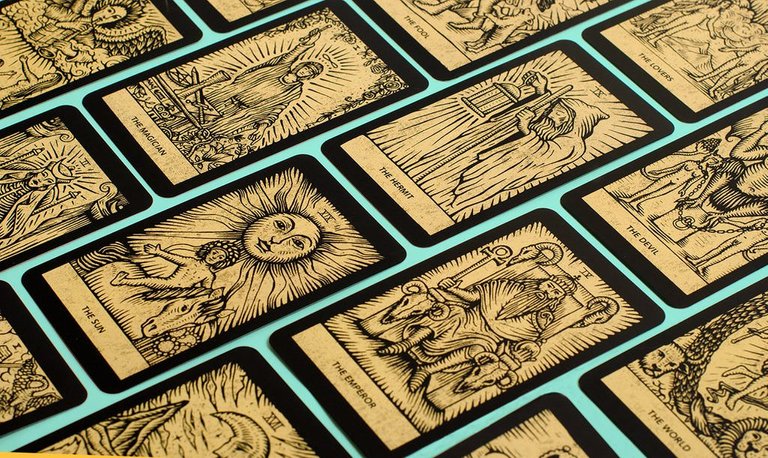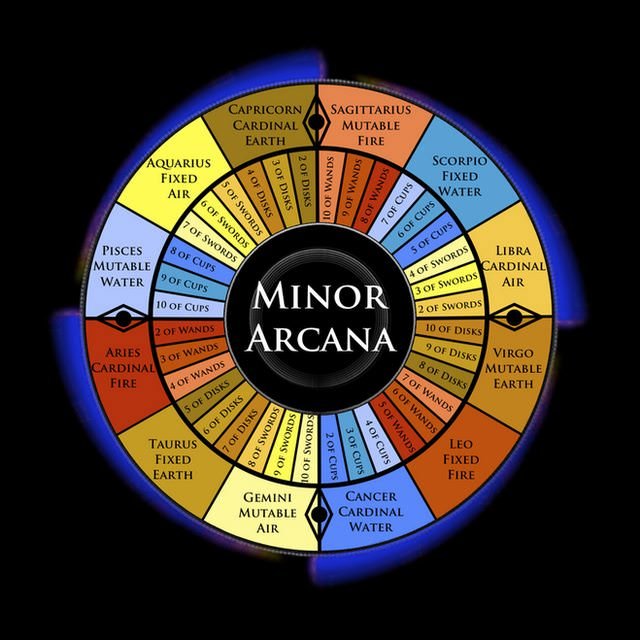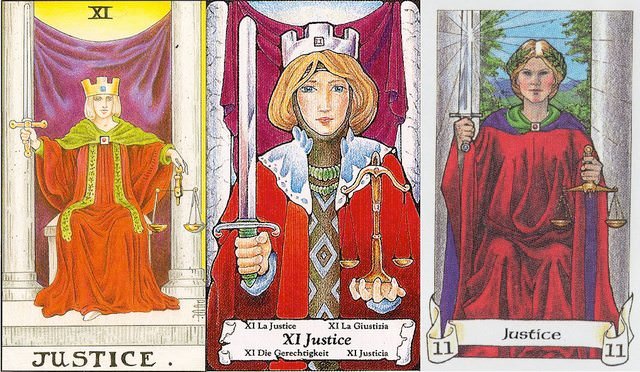My quest for understanding has led me to the Tarot.
Every couple of years for a long time the Tarot has been highlighted on my path. I have had times of interest, been gifted two different decks and books, been told I should work with them and inevitably just brushed it all aside. I had tried a couple of classes or workshops to learn more but was ever disappointed with with lack of depth being taught. I knew it was deep which is why I sought some kind of teacher, but just using them for generic readings was not floating my boat and I got bored.

More recently the Tarot & the Kabala have been presented on my path again almost akin to bait, and I took it. Realising that I was not going to get what I needed from the Love and Light brigade workshops, I have thrown my self into research. That has resulted in countless bookmarked websites, blogs, videos, and folded down corners of book pages. Here I have condensed what I have learned so far for ease of memorising key components for my self, and hopefully some of you will find it helpful too. Image Source
Brief History of the Tarot
The Tarot cards have captivated people for centuries. The oldest existing cards, of which there are 17 of the deck remaining, date from 1392. The oldest complete deck known to exist is dated 1422, and is the only surviving deck of this time period. If the Tarot does pre-date the 1300's there is little evidence to support this, but there are many comparisons that can be drawn from ancient times. It is not ludicrous to ponder that the ideas, teachings and beliefs behind the Tarot's powerful images are much older than the Tarot itself.
The cards can be spookily accurate at predicting the future, but invariably point to possibilities over probabilities. If read correctly, they can guide one to the forces shaping their life path, presenting choices and suggesting certain points of action.
Tarot Today
A standard modern day Tarot deck comprises of 78 cards, which are divided into two sections- the Minor Arcana (56 cards) and the Major Arcana (22 cards)- Arcana meaning secrets or mysteries.
Minor Arcana- lesser secrets
This section of the deck consists of 56 cards which seem to mirror a deck of normal playing cards most of us are familiar with. The Minor Arcana are divided into 4 suits which can be referred to in numerous ways.
1- Wands- also known as Staves or Batons
2- Pentacles- also known as Coins or Discs
3- Swords
4- Cups
Mirroring a normal playing deck as follows-
Wands-Clubs, Pentacles-Diamonds, Swords-Spades, Cups-Hearts.
And further, each of these suits is made up of numbered cards- Ace to 10, & four court cards-
King, Queen, Knight/Prince, & Page/Princess.
Information/History
Symbols used to represent the minor suits appear in several myths and legends. In Irish mythology, the legendary people of the Goddess Dana spoke of four magical treasures: a sword, a stone, a cauldron and a spear. Similar representations are seen in Hindu art: a sword, a ring, the cup and a sceptre (similar to a staff or wand). One of the stronger links lies with the Greek Goddess of fate Nemesis, who's symbols included- a sword, a wheel, a wand and a cup. Italians today continue to play a card game with the Minor Arcana called tarrochi.
Astrology & Minor Arcana
Very briefly, the Minor Arcana symbols are also connected with the elements of the ancient world: earth, air, fire & water, which form one of the foundations of Western astrology. Each of the 12 Zodiac signs are grouped into one of these 4 element groups, and each group has corresponding Minor Arcana cards.
Very Simply-
Wands- Fire -Aries, Leo, Sagittarius.
Pentacles- Earth - Taurus, Virgo, Capricorn.
Swords-Air - Gemini, Libra, Aquarius.
Cups-Water - Cancer, Scorpio, Pisces.

Major Arcana- greater secrets
This section of the deck consists of 22 cards numbered 0-21 (headache right), which are more elusive in nature as they do not seem to correspond with anything recognisable today.
Roman numerals/symbols are used on all of the cards, depending on how deeply you want to learn the tarot you may or may not want to wrap your head around this number system. (headache turns into a migraine). Elaboration on these numerals is at the end of the blog if you do want to know.
| 0-10 | 11-21 |
|---|---|
| 0-The Fool (0) | 11-Justice (XI) |
| 1-The Magician (I) | 12-The Hanged Man (XII) |
| 2-The High Priestess (II) | 13-Death (XIII) |
| 3-The Empress (III) | 14-Temperance (XIV) |
| 4-The Emperor (IV) | 15-The Devil (XV) |
| 5-The Hierophant (V) | 16-The Tower (XVI) |
| 6-The Lovers (VI) | 17-The Star (XVII) |
| 7-The Chariot (VII) | 18-The Moon (XVIII) |
| 8-Strength (VIII) | 19-The Sun (XIX) |
| 9-The Hermit (IX) | 20-Judgement (XX) |
| 10-Wheel of Fortune (X) | 21-The World (XXI) |
Information/History
The Major Arcana have puzzled and sometimes enraged scholars, mystics, psychologists and occultists alike. They do not appear to correspond with anything we understand today, as seems to be the case with the Minor Arcana with the standard playing deck, and various myths and legends. Yet, these 22 cards have been subject to an array of theories surrounding their origins. The notion that the Major Arcana is a book of esoteric teaching does not seem unreasonable given all that we know about the Tarot's history.
Ancient Egypt is one area of speculation. The cards have been linked with the writings of the legendary mystic and sage Hermes Trismegistus, author of many magical manuscripts. The word Gypsies is thought to derive from the word Egyptians, and it is thought by many that Gypsies took the tarot cards with them to India on their travels. Parallels can be seen by comparing ancient images of Egypt and modern day representations of cards. One example being the Egyptian image of Justice, showing a soul being weighed in the scales of justice by the jackal-headed God Anubis. Compared against modern day Tarot decks, almost every justice card in different decks from different times also contain a sword and weighing scales.

Many images found on these 22 cards seem rather medieval, and based on key figures of that era- The Fool, The Pope, The Magician, & The Day of Judgement would have been virtually every day features of that time. Medieval Europe was not a safe place for mystics/heretics, and recording philosophical secrets and teachings visually may have been a safe way to pass on this information without the risk of persecution. The Renaissance practice of using memorativa, which are pictorial memory systems, was integral to the occult movement of that time. Some propose that the Tarot is purely a medieval invention.
However, this does not account for many many factors, such as the surreal landscape depicted on the Moon, and the High Priestess, and the apparent parallels with ancient depictions. Many of the cards point to much older belief systems than Christian times. Perhaps as with all things, evolution and development of society and concepts over the course of time has been reflected in the Tarot, just my personal thoughts. The Tarot could have easily been a highly sophisticated pictorial memory log which tapped into deep levels of consciousness, and is still used for varying levels of contemplation today.
The Golden Dawn
Ritual magic, gnosticism, asrtology and the Kabala are all linked with the Tarot, influencing it's interpretations. Many of these interpretations were refined and/or devised during the times of the great occult revival in the 19th century. The Golden Dawn was a powerful, but short-lived magic order. The Pictoral Key to the Tarot by Arthur Edward Waite, a member of this order, was published in 1910. Pamela Colman Smith, another member, under his direction designed the Rider Waite Tarot deck which is ever popular today.
Aleister Crowley, also a member of the order, published his own guide and deck which I instantly fell in love with browsing online. The beautiful cards were illustrated by Freida Harris, and are known as the Thoth Tarot after the name of his book- The Book of Thoth. I am actually very drawn to these cards and have them on my wish list. Earlier in the summer I was attending a local psychic development class which I eventually left, and the lady running the classes actually advised me not to use the Thoth deck as they are apparently connected with evil, based on Crowley's dodgy magical dealings and tendencies. I immediately dismissed her concern which came from a good place, but ill informed. With literally 100's of decks available do your own research and get what you are drawn to. The Thoth deck is a bit different and visually pleasing for me personally, very colourful and not so boring!

Roman Numerals/symbols
Don't be afraid of Roman numerals! I have not delved into it in any depth at all, but I wanted to memorise 0-21 so I knew what number card that I was working with, as numbers hold relevance if you're going down the rabbit hole, e.g the connection with astrology mentioned above. Numerals are actually pretty easy to wrap your head around once you see the pattern.
My own personal understanding of it was essentially they are like very simple math equations, and you only really need to know a few core numerals to be able to decipher the others. I'll explain how I interpreted them using 1-6 to demonstrate. I will list the numerals 1-10 first so you can see what I am referring to.
The symbol for the number 2 is made from 2x the symbol for number 1, 2= II.
The symbol for the number 3 is made from 3x the symbol for number 1, 3= III.
The symbol for number 4 get's interesting- IV.
Note that the symbol for number 5=V, and we already know that the symbol for the number 1=I. The symbol IV (4) in my head represents the equation 5-1=4, and I only made this conclusion when I realised that the symbol for the number 6 is VI, representing 5+1=6, it's a progression. 4= IV, 5=V, 6=VI
When the number 1 symbol I is in front of the number 5 symbol V this essentially represents the - or subtraction action. When the same symbol is behind the V this essentially represents the + or addition action.
Thus: IV means (5-1=4) & VI means (5+1=6)
Some other examples of this pattern: XIV means (10+4=14), IX means (10-1=9) etc etc.
(Migraine relief!)
Links to some sites I have found useful/sources of my information:
Tarotica.net
Teachmetarot.com
Thecollectorsweekly.com
@jeremycrow has some amazing posts on his blog and a very informative website.
Wikipedia has been helpful, although there is much debate about how trustworthy this is as a reliable information source.
YouTube has also been helpful, lots of interesting people giving really in depth lessons, and talks about it's history and development.
Two books I am using at the moment are:
Tarot for Your Self: A Workbook for Personal Transformation Book. Mary K. Greer
The Ultimate Guide to Tarot: A Beginner's Guide to the Cards, Spreads, and Revealing the Mystery of the Tarot. Liz Dean
Thanks For Reading
MyIndigoInsight
This is a wonderfully written article. Thank you so much for it. I don't read tarot, I read playing cards. Sometimes I come across people who read playing cards like tarot cards but that's not the system I use.
I'm familiar with tarot though because it's so popular so I had to step into that world a bit because sometimes people ask me for a tarot reading. I don't want to be totally ignorant. But I just take it as an opportunity to share that all readers don't use the same tools. But I think it's great when people find a tool that works for them to journey on their path to self discovery.
Thank you so much for the feedback. I have heard that people read standard playing cards- how do you read them? I guess I mean is there some sort of standard way to do it, or have you totally customised how you do it? Do 8 of clubs mean something in particular? Very interested !! x
I've used cardomancy before, pretty cool I never knew anyone else who's done that before. I would do relationship readings. King if spades, ace of spades, Queen of diamonds, ace of diamonds, ace of hearts, Jack would mean there's someone else either in yours or the other person's life, the number cards were spacers that can signify distance or space, uncertainty. I kept doing it for awhile because people would just request it. It's been years though. I just got into tarot cards
Posted using Partiko Android
Hello from the Steemit Tarot community!
@steemittarot began as a way to curate all the Tarot Tuesday posts that starting popping up on the site. Now the hope is to connect all readers, people interested in learning about the cards, and other assorted people bearing good juju.
To this end, your post has been resteemed and/or upvoted. To find out more, check out the intro post here.